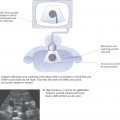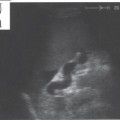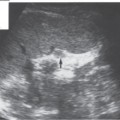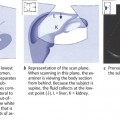12 Bladder, Prostate, and Uterus
Up to now we have deliberately focused our attention on the organs of the upper abdomen that are classic subjects for examination by ultrasound. However, every ultrasound examination of the abdomen should also include a look at the organs that fall within the domain of urology and gynecology. It is important, therefore, to give a brief account of the bladder, prostate, and uterus.
 Organ Boundaries and Relations
Organ Boundaries and Relations
Bladder and prostate
Demonstrating the bladder and prostate in longitudinal section
Place the transducer longitudinally in the midline just above the symphysis pubis, preferably with a full bladder. Angle the scan slightly downward. Identify the echo-free lumen of the bladder and, behind it, the prostate (Fig. 12.1). The prostate is hypoechoic, homogeneous, and bounded by a capsule. It normally measures up to 35 mm in its craniocaudal dimension.
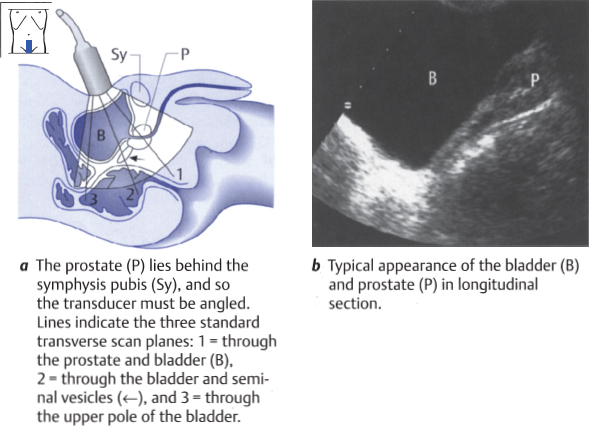
Fig. 12.1 Bladder and prostate in longitudinal section
Demonstrating the bladder and prostate in transverse section
Scan transversely above the symphysis pubis and angle the probe sharply downward. Identify the bladder and prostate (Fig. 12.2a). The prostate appears symmetrical in cross section, displaying an elliptical or triangular shape. It measures 3 – 4 cm transversely and 2 – 3 cm anteroposteriorly. Scan slightly upward and watch the section of the prostate diminish in size. It is replaced by a section of the seminal vesicles, which are just lateral to the prostate (Fig. 12.2b). As you continue scanning cephalad, you will see only the section of the bladder (Fig. 12.2c).
Stay updated, free articles. Join our Telegram channel

Full access? Get Clinical Tree


